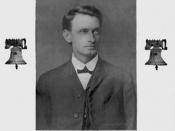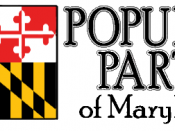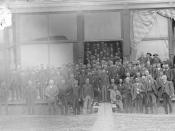It was 1892 and the American Western farmers were facing more suffering from deflation. With the railroads holding most of the good land, the farmers were forced to work the less desirable land or to buy the land from the railroads and go into debt. With no solution in sight from the government, the Populist Party formally organized and drew up the Omaha platform to outline their concerns and ideas of how to resolve not only the farmers' problems but the nation's problems. The Populist Party never gained national power but many of their ideas survived into the 20th century with the Progressive Coalition during its Reform Phase (1901-1921). Although the Progressive Coalition didn't carry out all the solutions proposed by the Populists, the problems that the two groups addressed were essentially the same.
The Populist Party was composed of white western farmers while the Progressive Coalition was mostly made up of reformers from the white urban area middle class.
Even though the Populist Party and the Progressive Coalition were made up of two different groups of people, those groups had the same basic goal: to improve the quality of life for Americans across the country. Both the Populists and the Progressives sought reform in the control of the government and what the government controlled. During the 1890's the railroads monopolized storage, transportation, and land in the west. Since the railroads had so much control, they were able to give secret rebates to favored customers, i.e. large shippers, and charge discriminatory rates. The rebates were extremely unfair to the western farmers because they tended to be smaller shippers. The western farmers were in debt and had no way out. The Populists proposed that the government own and manage the railroads, but be placed under a rigid civil-service regulation. The Progressives...


